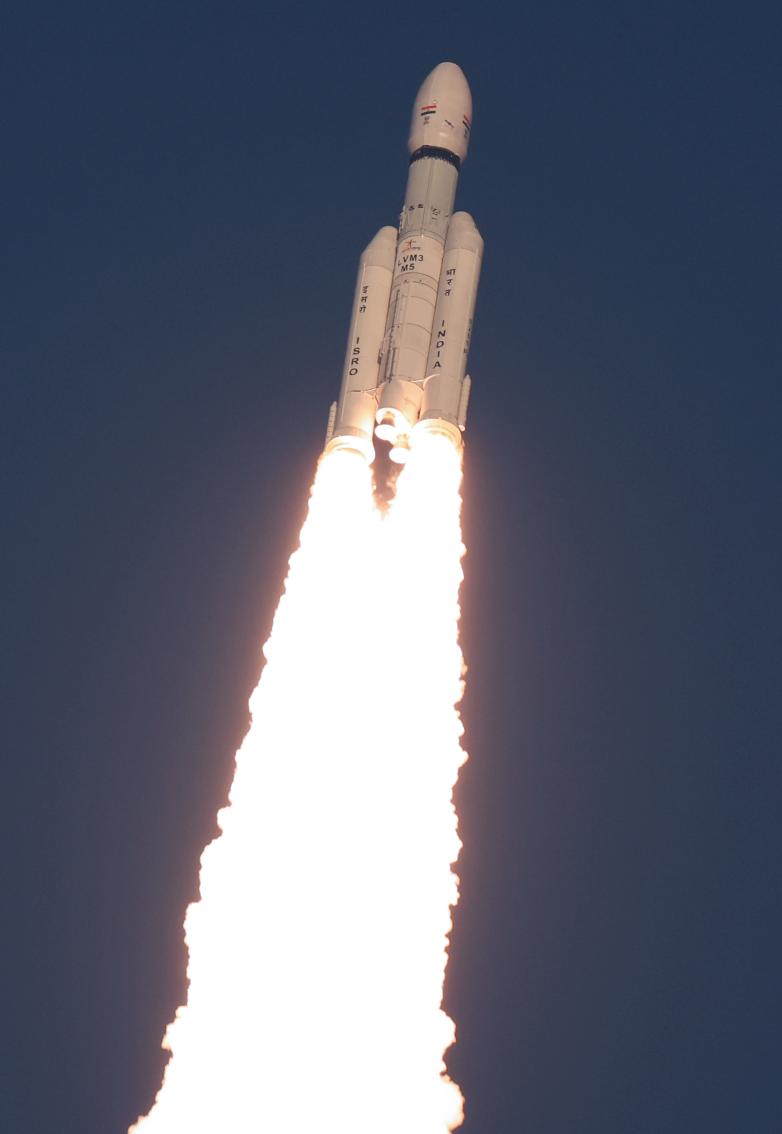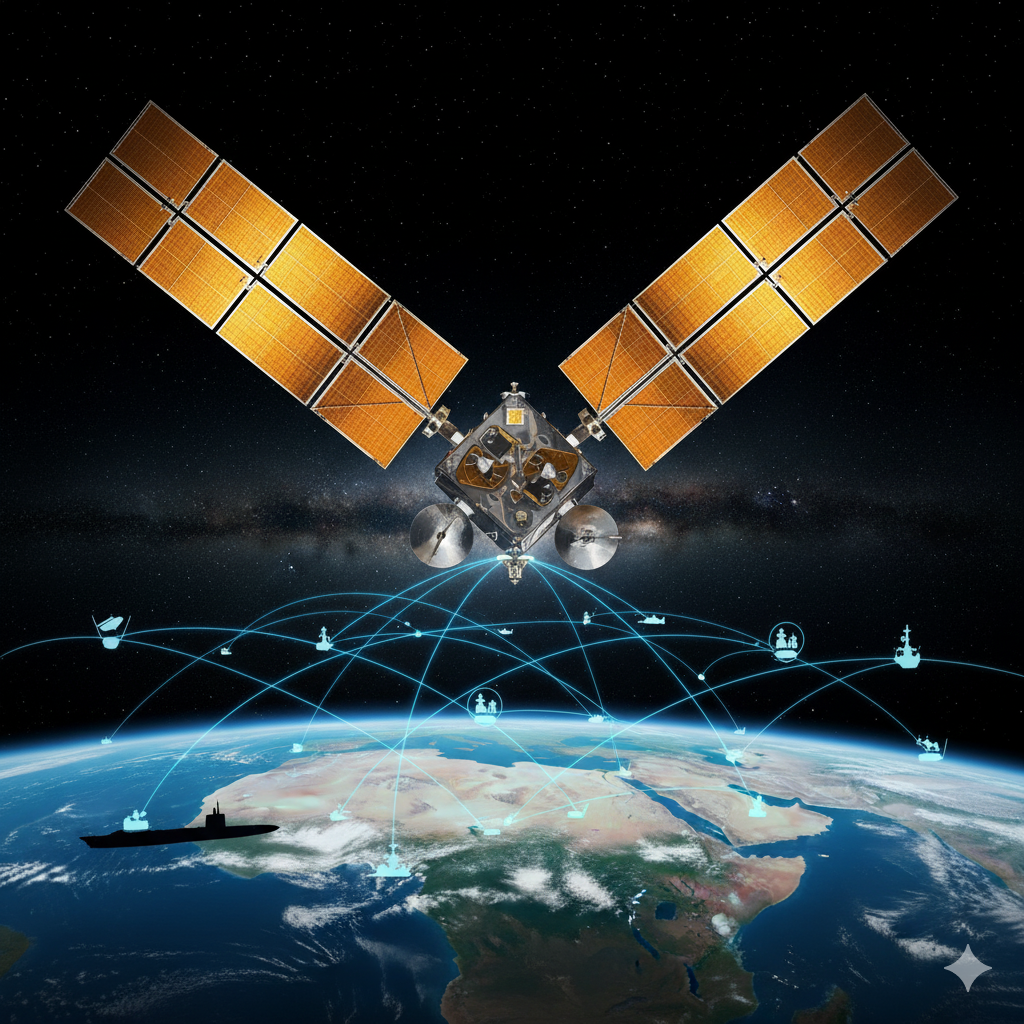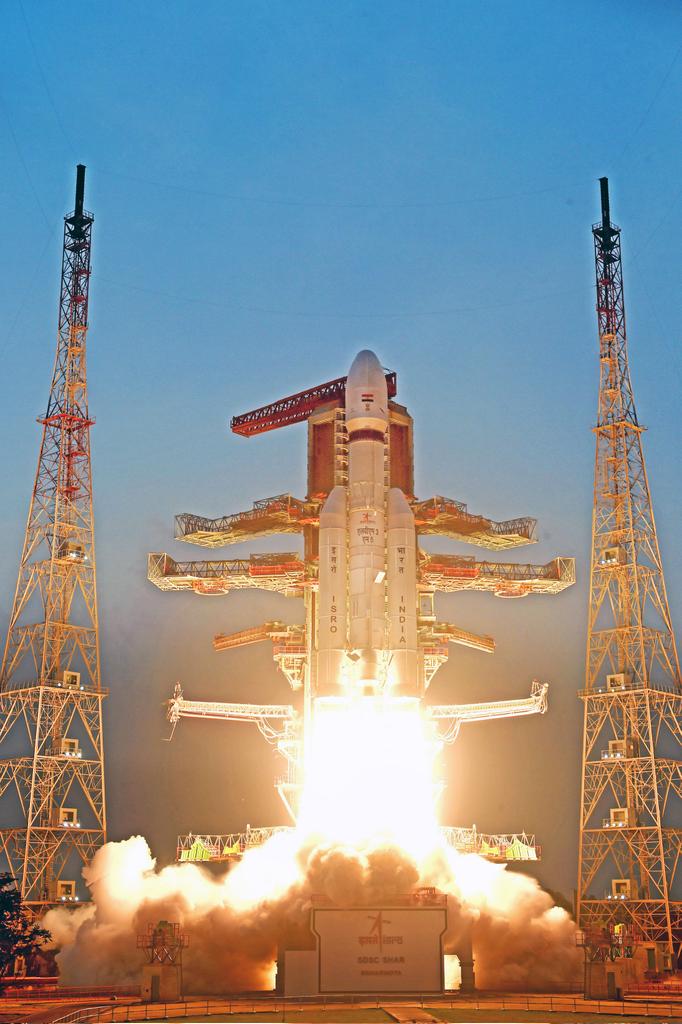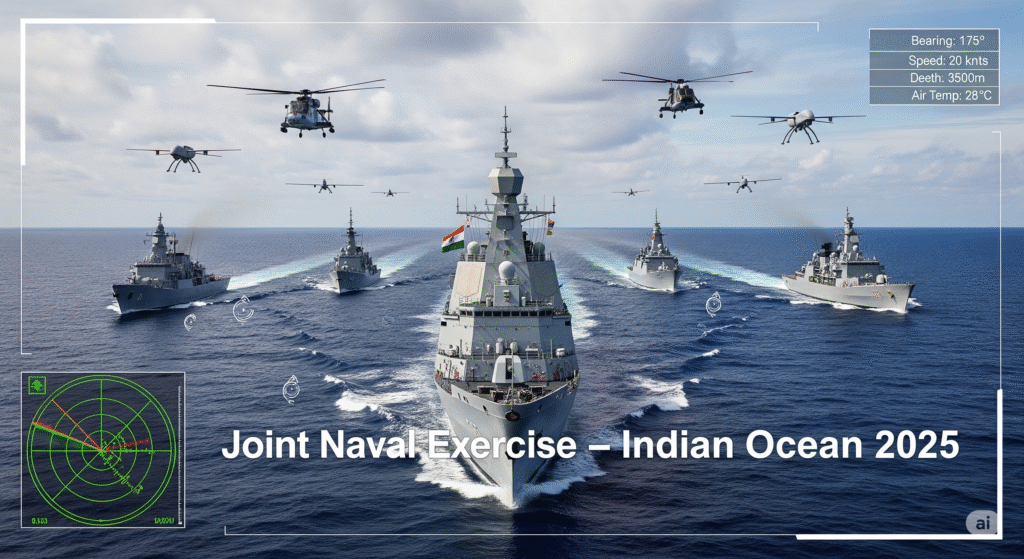LVM3-M5 Triumph: CMS-03 Powers Navy’s Secure Comms in a Contested IOR

At 21:08 IST on November 2, 2025, the night sky over Sriharikota lit up as ISRO’s LVM3-M5 rocket—India’s heaviest and most powerful launch vehicle—thundered into orbit from the Second Launch Pad (SLP) at Satish Dhawan Space Centre (SDSC). Its payload: the 4,410 kg CMS-03 (GSAT-7R), a military-grade communication satellite designed exclusively to empower the Indian Navy with secure, real-time, and resilient connectivity across a 5-million-square-kilometer swathe of the Indian Ocean Region (IOR).
This wasn’t just another satellite launch. It was a strategic leap in India’s quest for maritime supremacy, space self-reliance, and net-centric warfare—all under the banner of Aatmanirbhar Bharat.
A New Constellation for the Blue Water Navy
CMS-03 replaces and significantly upgrades the aging GSAT-7 (Rukmini), launched in 2013. Operating in X-band and Ku-band frequencies, the new satellite delivers:
- Secure voice, video, and data links for over 200 naval platforms—including aircraft carriers, destroyers, submarines, and P-8I aircraft
- Submarine communication at depth via VLF uplink integration
- Anti-jam, frequency-hopping resilience against electronic warfare
- Real-time targeting data relay for BrahMos, Nirbhay, and future hypersonic weapons
CMS-03 Technical Specifications:
- Mass: 4,410 kg (heaviest Indian comms satellite)
- Power: 11 kW (solar arrays with Li-ion batteries)
- Lifespan: 15 years
- Coverage: 5 million sq km (Arabian Sea to Malacca Strait)
- Transponders: 32 high-power X/Ku-band
- Orbit: Geostationary at 74° East
LVM3-M5: The Indigenous Heavy-Lift Beast
For the first time, India launched a satellite of this mass without foreign assistance. The LVM3 (formerly GSLV Mk III) used in M5 configuration featured:
- C25 cryogenic upper stage with CE-20 engine (indigenous)
- Vikas engine core stage (upgraded thrust)
- Enhanced fairing to accommodate 4.6m-wide payload
The 43.5-meter-tall, 640-tonne rocket achieved injection accuracy of ±12 km in apogee and ±0.1° in inclination—better than international benchmarks. ISRO Chairman Dr. S. Somanath confirmed: “This mission ends India’s dependency on Ariane or Falcon for heavy GEO payloads.”

Strategic Edge in a Contested IOR
The Indian Ocean is no longer a peaceful highway. Chinese Type 093 SSN submarines, Yuan-class SSKs, and research vessels with dual-use hydrographic gear routinely probe India’s EEZ. Pakistan’s Agosta 90B subs, now equipped with Babur-3 SLCMs, pose a direct threat to Mumbai and Kochi.
CMS-03 counters this with:
- Real-time P-8I to submarine kill chain via encrypted datalink
- QUAD-shared ISR grid—U.S. MQ-4C Triton data fused with Indian Navy feeds
- Over-the-horizon targeting for INS Vikrant’s MiG-29K and future TEDBF
- Disaster response backbone—linking ICG Dorniers with NDMA during cyclones
Vice Admiral Sanjay Vatsayan, DCNS, stated: “With CMS-03, every ship is a node in a floating digital fortress. We can fight blindfolded—and win.”
Gaganyaan & Beyond: The Ripple Effect
LVM3-M5 was a dress rehearsal for Gaganyaan. The same vehicle will launch the uncrewed G1 mission in Q2 2026. Success here validates:
- Human-rated systems
- Crew Escape System (CES) integration
- Precision orbital insertion for docking
ISRO also eyes Chandrayaan-4 sample return and Bharatiya Antriksh Station (BAS) modules on future LVM3 flights.
PM Modi’s Vision: From Launchpad to Superpower
Watching the launch live from New Delhi, Prime Minister Narendra Modi tweeted:
“LVM3-M5 is not just a rocket—it is India’s resolve. From Sriharikota to the stars, from secure seas to sovereign skies, we march as a space and defence superpower. Jai Hind!”
Future Constellation: CMS-04, CMS-05, and LVM3-H
ISRO has greenlit:
- CMS-04 (2027): Dedicated to IAF with Ka-band for UAV swarms
- CMS-05 (2028): Army-centric, anti-jam SATCOM for high-altitude ops
- LVM3-H (2030): Human-rated, 10-tonne to LEO capability
Mission Timeline (Nov 2, 2025):
- T-0: 21:08 IST – Liftoff
- T+4 min: S200 separation
- T+5 min: Payload fairing jettison
- T+17 min: C25 cutoff, orbit injection
- T+72 hrs: CMS-03 solar panel & antenna deployment
- T+7 days: Handover to IN-SATCOM Cell
As CMS-03 unfurls its golden solar wings 36,000 km above the equator, it silently watches over India’s maritime frontier—connecting carriers to corvettes, submarines to satellites, and strategy to supremacy. In the new space race, India has not just arrived—it has taken pole position.



